DT: Making baby bears chair
Over the half term, we have been looking at what creates a stable structure. We found that a stable structure has a wide base, low height and a flat surface. First we tested 3 different shapes (cuboid, triangular prism and a cylinder). We found that the cylinder was the most stable and could hold the most weight. This is because it doesn’t have any corners. The children were set a challenge to plan and design a chair for Baby Bear from the story Goldilocks and the three bears.



Next, we made a plan by designing our chair thinking carefully about the chairs for baby bear will look like. How many legs will it have? What shape will the seat be? What will the back look like? What materials/resources will you need?



When we had made our chairs, we tested the stability by placing different weighted bears onto the chairs.






Well done Year 1 and 2. You worked well together to create your own chairs for baby bear.
Help at home:
What 3 things make a stable structure?
Would you do anything differently if you were to make the chair again?
Forest School
Today we celebrated mud week at Forest School. We could paint using mud, we could cook different food with it in the mud kitchen, we could squelch the mud with our hands. It was all very fun and messy. We also had a go at using a flint and steal to spark a fire.













Our trip to Cannon Hall Farm
We’ve had a fantastic time today on our trip to Cannon Hall Farm! All of the children behaved impeccably and were a credit to our school.
Science: animals including humans!
This half term, in Year 1 and 2, we are biologists with Miss Kay on Fridays. This means we study living things.
Our current learning is all about ‘Animals including humans’. We’ve started this by thinking about what babies need to grow, and how we change through the life-cycle (from being a baby, to a toddler, to a child, teenager, adult and so on…).
This week, we’ve investigated the big question: do older children have bigger heads? We’ve measured the head size of children in each year group. This linked nicely to our Living and Learning statement this week by asking for permission to measure the head size of our peers.
A reception child might have a smaller head because they are younger.
A child in Year 6 will have a bigger head because they are tall.



We found out that older children definitely have bigger heads!
We took the opportunity to measure Mrs Valentine’s head. It was the same size as our friend in Year 6! We questioned does Mrs Valentine have the head size of a child, or does our Year 6 pupil have the head size of an adult?

Help at home: below are our key words for this topic – ask your child if they can tell you what they mean. Some will be covered in more detail as we progress through this topic.

Food Technology: Fruit Bars
This week, Year 1 and 2 have made some fruit bars. They had to follow the method in the right order and work carefully with their group.










Today, we evaluated the fruit bar by answering the following questions:
- What part of the method did you enjoy the most and why?
- If you were to make the fruit bars again what would you do differently?
- How did you keep safe when making the fruit bars?


Help at home: What would you do differently if you were to make them again? Have a go at making the fruit bars with any of the changes you suggested. How did they taste? Don’t forget to let us know how it goes.
Forest School
Today was our first Forest School session. We’ve had a fantastic time building a boggle house. A boggle is a tiny creature that lives in the forest but no ones ever seen it. It’s a small creature that you might see out of the corner of your eye but when you look it’s gone!
We also did some litter picking, swung on the trapeze and swayed in the hammock.
Topic – Leonora Cohen
This week, we have been learning about Leonora Cohen. We have found out that she was a Suffragette who was born in Leeds. The Suffragettes protested about the inequality of women not being able to vote.
We looked carefully at some of the items worn by Suffragettes to show their support and what they believe in.
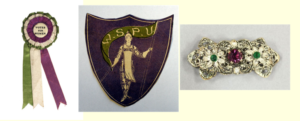
We commented on how they all used the same three colours.
purple = dignity green = hope white = purity
We also looked at the dress Leonora Cohen designed and wore to a ball and discussed why we thought she designed it this way.

“It has the same colours as the items. Purple, green and white.”
“It has a woman showing she was fighting for equality for women”
“It has the word Suffragettes so people knew what she believed.”
We designed our own Suffragette dress thinking carefully about the colours and the designs.



Today, we split into groups and created a freeze frame of the moment Leonora Cohen was arrested for one of her more violent protests.




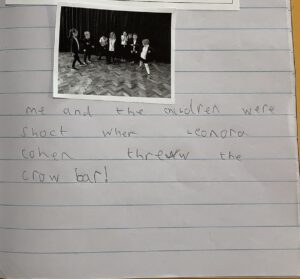

Help at home:
Watch this video (This is a YouTube link. Top tip for watching YouTube with your child: go to the settings cog along the play bar and turn off autoplay – this avoids an inappropriate clip coming up automatically, and helps to discourage your child from passively watching clip after clip) and look at the pictures below to tell someone at home what you can remember about the Suffragettes?
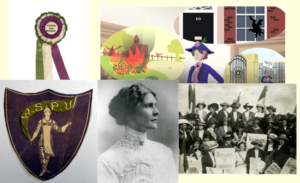
Living and Learning: I know the importance of ‘five a day’
For our living and learning session, we were thinking about what makes a healthy diet and how we need to eat five portions of fruit and veg a day.
We learned what a portion was and how the size of the portion changes depending on what the food is – whether it’s as a juice, fresh or dried.
We heard about Lucas and his food diary. We looked at how we could improve his diet to make it healthier. 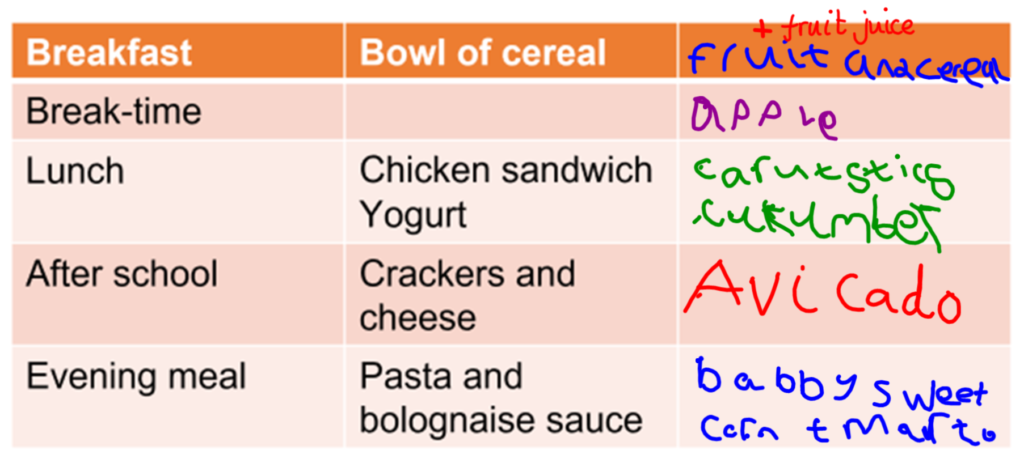
We had a look at different foods and decided which food groups they should go into and how we were going to try and include ‘five a day’ in our healthy diets.
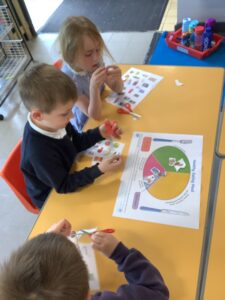
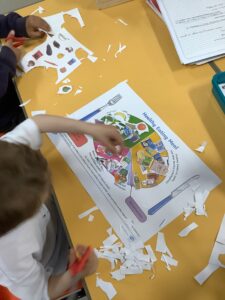

05.05.23 and 12.05.23
Below are the new spellings for the next two weeks, please practise ready for a spelling test on Friday 19 May.
- table
- apple
- bottle
- little
- middle
- have
- live
- give
- there
- their

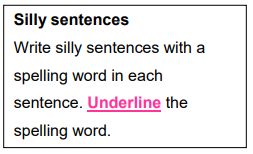
Spelling Quiz
Well done to the Year 1 children who scored 10/10 in their spellings this week!

Please support your child to practise their spellings at home ready for their spelling test every other Friday.




